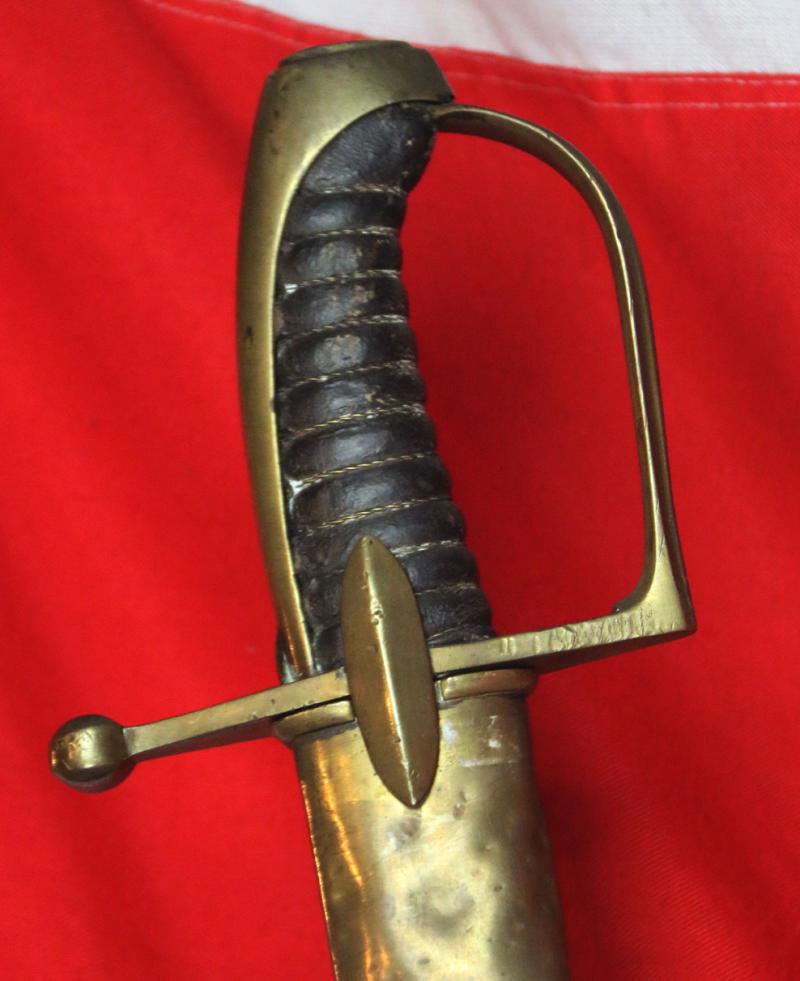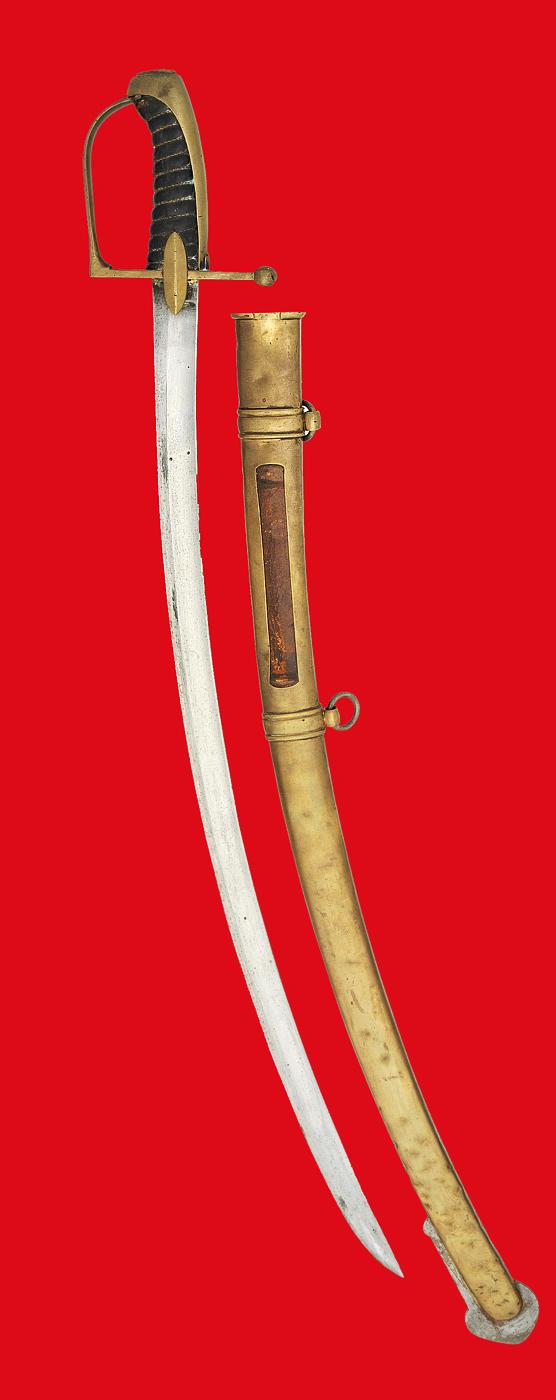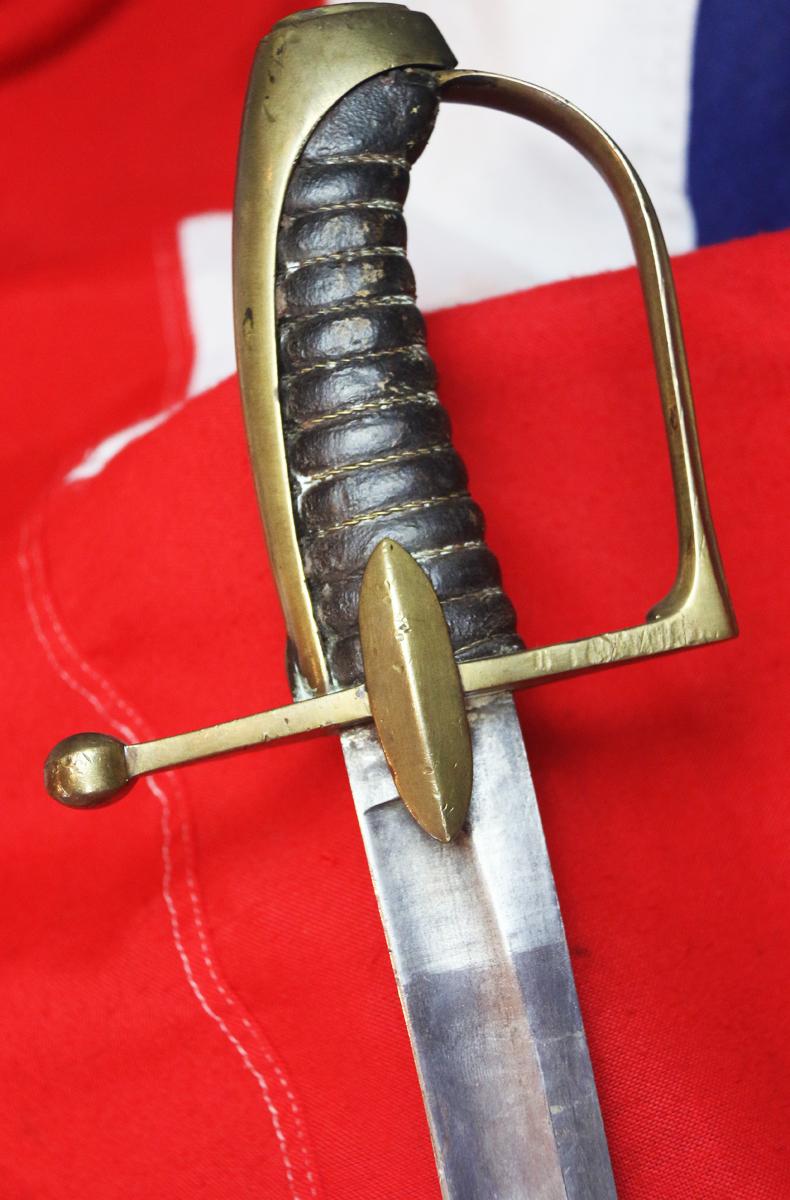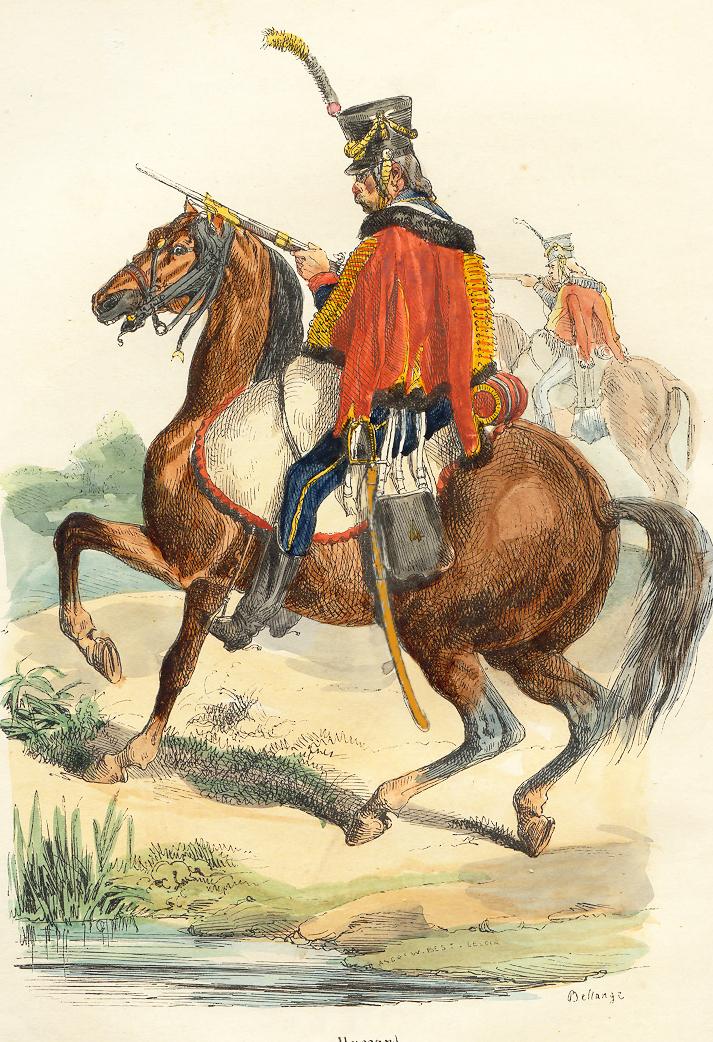A French Hussar's Light Cavalry Officer's Heavy Grade Sabre, Sabre de Hussard, Late 18th/Early 19th Century Ist Empire
A strong robust brass hilt (old bruising in places) with ovoidal langets, rear quillon with faceted button terminal, knuckle-guard with medial ridge, pommel and back-piece in one, and wire-bound leather-covered grip, With curved fullered blade double-edged towards the point and with Coulaux Freres Klingenthal manufactory details along the back at the forte, in original brass scabbard (with some old denting, predominantly up from the chape) lined in brown leather and open along each side at the top, steel shoe, and two rings for suspension
33.75 inch. blade.
The word “hussar” identifies the light horsemen and comes from the Hungarian “huszar”. The most famous hussar units were the French regiments of the Napoleonic era. They were employed for scouting and communication purposes, and to screen the movement of the Emperor's corps, like during the advance that allowed the French to flank the Austrian general Mack at Ulm in 1805. The hussars, such as of the 1st Hussars employed at Jena in 1806, are characterized by the ornate Hungarian style uniform, sabretache, sabre and carbine.
The hussars also played a prominent role as cavalry in the Napoleonic Wars (1803–1815), serving in campaigns in Austria (1804 & 1809), Prussia (1805 -1806), Poland (1806), Spain (1809 - 1813), Germany (1812), France (1814 - 1815), and Belgium (1815) before being disbanded by the Bourbon Restoration.
As light cavalrymen mounted on fast horses, they would be used to fight skirmish battles and for scouting. Most of the great European powers raised hussar regiments. The armies of France, Austria, Prussia, and Russia had included hussar regiments since the mid-18th century. In the case of Britain, four light dragoon regiments were converted to hussars in 1806–1807.
Hussars gained notoriety in the Grande Armée after the invasion of Egypt. At the Battle of Salalieh in August 1798, brigade commander Antoine Charles Louis de Lasalle fought "like a demon" and solidified his reputation as a maverick rider upon returning to France and receiving Weapons of Honour. At the ceremony (in a remark often mistakenly attributed to Napoleon), Lasalle quipped "Any hussar who isn't dead at age 30 is a layabout." The hussars of Napoleon's army created the tradition of sabrage, the opening of a champagne bottle with a sabre. Moustaches were universally worn by Napoleonic period hussars, the British hussars were the only moustachioed troops in the British Army – leading to occasional taunts of "foreigner" from their brothers-in-arms. French hussars also wore cadenettes, braids of hair hanging to either side of the face, until the practice was officially proscribed when shorter hair became universal. This sabre is from a private collection of one of the foremost experts and authors of swords in Scandinavia, and chairman of the the Norwegian Weapons Historical Society
A famous military commander in Bonaparte's army who began his military career as a hussar was Marshal Ney, who after being employed as a clerk in an iron works joined the 5th Hussars in 1787. He rose through the ranks of the hussars in the wars of Belgium and the Rhineland (1794–1798) fighting against the forces of Austria and Prussia before receiving his marshal's baton in 1804 after the Emperor Napoleon's coronation.
On the French Revolution, it was numbered as the 5th Hussar Regiment during the army reorganisation of 1 January 1791, as the fifth oldest cavalry unit in the French army, before being promoted to 4th Hussar Regiment in 1793 after the previous holder of that title. In 1814, just before the fall of the First French Empire, it was renamed the régiment des hussards de Monsieur, though it resumed the title of 4th Hussar Regiment during the Hundred Days before being disbanded on the Bourbon Restoration which followed. After Napoleon returned from exile and invaded Belgium, the 4th Hussar Regiment would enter combat at the final battles of Ligny, and Waterloo, in which Napoleon would be defeated.
Code: 25354
3300.00 GBP









